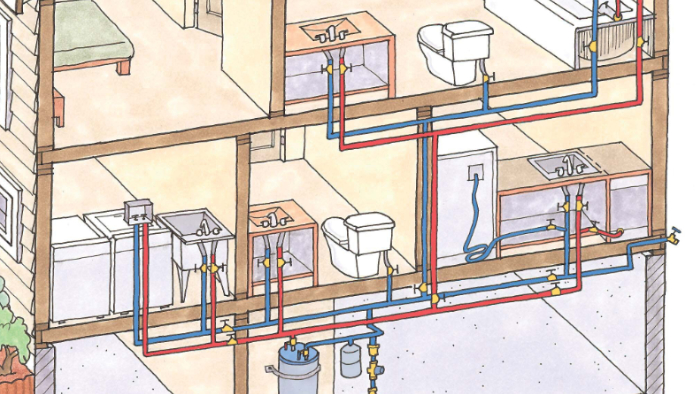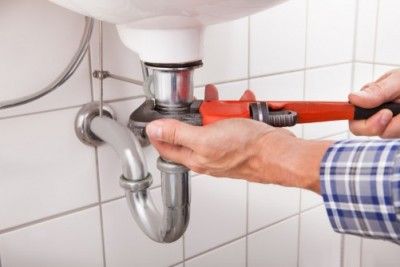What The Design of Your Home's Plumbing System Matters
What The Design of Your Home's Plumbing System Matters
Blog Article
We've uncovered this article about Understanding Your Home's Plumbing Anatomy below on the net and decided it made perfect sense to quickly share it with you on my blog.

Comprehending exactly how your home's plumbing system works is important for every homeowner. From delivering clean water for alcohol consumption, food preparation, and showering to securely eliminating wastewater, a well-kept pipes system is essential for your family's wellness and convenience. In this extensive guide, we'll explore the detailed network that comprises your home's plumbing and offer pointers on upkeep, upgrades, and dealing with usual concerns.
Intro
Your home's plumbing system is more than simply a network of pipelines; it's a complicated system that ensures you have accessibility to clean water and efficient wastewater elimination. Understanding its components and exactly how they collaborate can help you protect against pricey repair services and guarantee everything runs efficiently.
Fundamental Parts of a Pipes System
Pipes and Tubes
At the heart of your plumbing system are the pipes and tubes that bring water throughout your home. These can be made of numerous materials such as copper, PVC, or PEX, each with its advantages in regards to sturdiness and cost-effectiveness.
Fixtures: Sinks, Toilets, Showers, and so on.
Fixtures like sinks, toilets, showers, and bath tubs are where water is utilized in your home. Recognizing how these components link to the plumbing system assists in identifying troubles and intending upgrades.
Valves and Shut-off Points
Valves control the circulation of water in your plumbing system. Shut-off valves are vital during emergency situations or when you need to make repairs, enabling you to separate parts of the system without interrupting water flow to the whole residence.
Supply Of Water System
Main Water Line
The main water line attaches your home to the community water or a personal well. It's where water enters your home and is distributed to different components.
Water Meter and Pressure Regulatory Authority
The water meter steps your water use, while a pressure regulatory authority guarantees that water streams at a risk-free stress throughout your home's plumbing system, preventing damage to pipelines and components.
Cold Water vs. Warm water Lines
Understanding the distinction in between cold water lines, which provide water straight from the main, and hot water lines, which carry heated water from the water heater, assists in repairing and preparing for upgrades.
Water drainage System
Drain Pipes Pipes and Traps
Drain pipes bring wastewater far from sinks, showers, and commodes to the sewage system or septic tank. Traps prevent sewer gases from entering your home and also trap debris that might trigger obstructions.
Air flow Pipelines
Air flow pipelines enable air right into the drain system, protecting against suction that can reduce drainage and cause catches to vacant. Proper ventilation is important for maintaining the integrity of your pipes system.
Relevance of Correct Water Drainage
Making sure appropriate drain avoids backups and water damage. Routinely cleaning drains pipes and keeping traps can prevent pricey fixings and prolong the life of your plumbing system.
Water Heating Unit
Types of Water Heaters
Hot water heater can be tankless or typical tank-style. Tankless heaters warmth water as needed, while storage tanks store warmed water for instant use.
Updating Your Pipes System
Reasons for Upgrading
Upgrading to water-efficient components or changing old pipes can improve water top quality, minimize water expenses, and raise the value of your home.
Modern Pipes Technologies and Their Advantages
Discover innovations like smart leakage detectors, water-saving bathrooms, and energy-efficient water heaters that can save cash and decrease ecological impact.
Price Considerations and ROI
Calculate the in advance costs versus lasting financial savings when thinking about pipes upgrades. Lots of upgrades spend for themselves with minimized utility bills and fewer fixings.
How Water Heaters Connect to the Pipes System
Comprehending how hot water heater link to both the cold water supply and hot water circulation lines assists in diagnosing concerns like inadequate hot water or leakages.
Upkeep Tips for Water Heaters
Routinely purging your water heater to remove debris, checking the temperature level settings, and inspecting for leaks can expand its life expectancy and improve power efficiency.
Usual Plumbing Issues
Leakages and Their Causes
Leakages can occur due to maturing pipes, loosened fittings, or high water stress. Dealing with leakages quickly protects against water damage and mold development.
Clogs and Obstructions
Clogs in drains pipes and toilets are commonly caused by purging non-flushable things or a buildup of grease and hair. Making use of drainpipe screens and being mindful of what drops your drains can protect against clogs.
Signs of Plumbing Troubles to Expect
Low tide pressure, sluggish drains pipes, foul odors, or abnormally high water costs are signs of prospective pipes troubles that need to be addressed promptly.
Plumbing Maintenance Tips
Regular Inspections and Checks
Schedule annual plumbing evaluations to capture problems early. Seek indicators of leaks, deterioration, or mineral build-up in taps and showerheads.
Do It Yourself Maintenance Tasks
Basic jobs like cleansing tap aerators, checking for bathroom leakages making use of dye tablets, or insulating subjected pipelines in cool environments can prevent major pipes issues.
When to Call a Professional Plumbing
Know when a pipes issue needs expert expertise. Attempting complicated repair work without proper knowledge can result in more damage and higher repair service expenses.
Tips for Lowering Water Use
Basic routines like taking care of leaks immediately, taking much shorter showers, and running complete lots of washing and recipes can preserve water and lower your utility expenses.
Eco-Friendly Pipes Options
Think about sustainable plumbing materials like bamboo for flooring, which is durable and environmentally friendly, or recycled glass for countertops.
Emergency situation Readiness
Steps to Take During a Plumbing Emergency situation
Know where your shut-off shutoffs are located and just how to switch off the supply of water in case of a burst pipeline or significant leak.
Importance of Having Emergency Situation Calls Helpful
Keep call info for regional plumbers or emergency situation solutions readily available for fast response throughout a pipes crisis.
Ecological Effect and Conservation
Water-Saving Components and Appliances
Mounting low-flow taps, showerheads, and toilets can substantially decrease water usage without giving up performance.
DIY Emergency Situation Fixes (When Appropriate).
Temporary repairs like using air duct tape to patch a leaking pipe or placing a pail under a trickling tap can lessen damages up until an expert plumbing gets here.
Final thought.
Comprehending the anatomy of your home's plumbing system encourages you to keep it properly, conserving time and money on repair services. By following regular upkeep regimens and staying informed concerning modern-day pipes technologies, you can guarantee your plumbing system runs efficiently for several years to come.
Understanding Your Home Plumbing System: A Comprehensive Guide
Plumbing System: The Lifeline of Your Home
At its core, the plumbing system is designed to perform two primary functions: bring fresh water into your home and remove wastewater. The system is a network of pipes, fixtures, and other components that transport water and sewage. Residential plumbing systems include potable water supply lines, drain-waste-vent (DWV) systems, and various plumbing fixtures that make water use in daily tasks possible.
Key Components:
Water Supply: This part of your plumbing system brings municipal water into your home, passing through the main water supply line. It s responsible for supplying all water needs, from drinking to bathing.
Drainage System: It carries waste and water away from your home to the sewer or septic system. This system includes all the piping within your home that leads to external sewage or septic systems.
Vent System: An essential yet often overlooked component, the vent system allows sewer gases to escape and lets air into the drainpipes, ensuring water and waste move correctly through the system.
Fixture: More Than Just Taps and Toilets
Plumbing fixtures are the most interactive parts of the plumbing system, including faucets, showers, toilets, and sinks. Each fixture is connected to the plumbing system and plays a role in either the delivery of freshwater or the disposal of waste and wastewater.
Types of Fixtures:
Faucets and Sinks: Used for washing hands, dishes, and other daily water needs. Toilets: Dispose of human waste through the sewage system. Bathtubs and Showers: Provide bathing facilities, requiring both hot and cold water supply. Water Supply: The Source of Life
The water supply system is a critical component, ensuring that potable water is available throughout your home for various uses, including drinking, cooking, and cleaning. This system consists of pipes that distribute water to different parts of the house, controlled by valves to regulate the water flow.
Types of Plumbing: Materials and Methods
Various types of plumbing systems and materials are used in residential settings, each with its advantages and applications. From copper and PVC pipes for water supply to cast iron and ABS for drainage, the choice of materials can impact the longevity and efficiency of your plumbing system.
https://intownplumbingtx.com/articles/home-plumbing-system-guide/

I recently found that blog entry on Exploring Your Homes Plumbing Anatomy while surfing around the internet. Loved our piece? Please quickly share it. Let others find it. We cherish reading our article about Understanding Your Home's Plumbing Anatomy.
Learn More Report this page